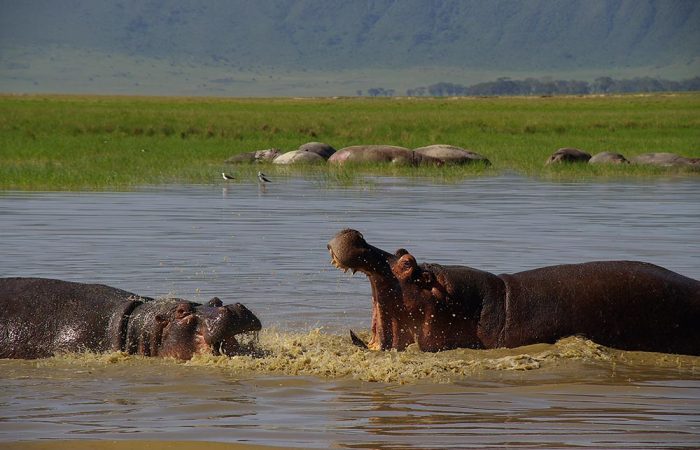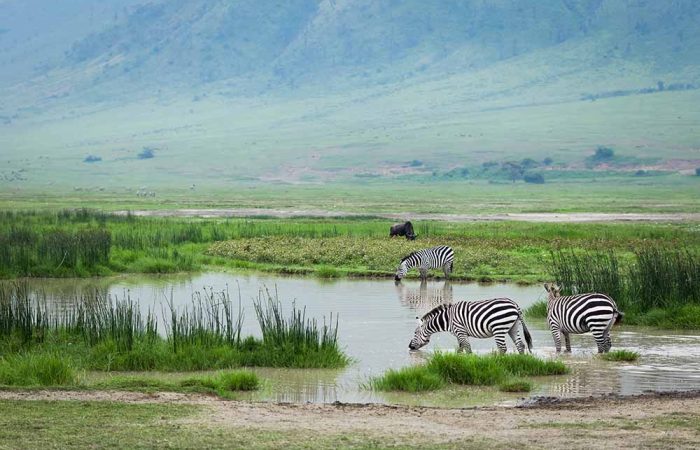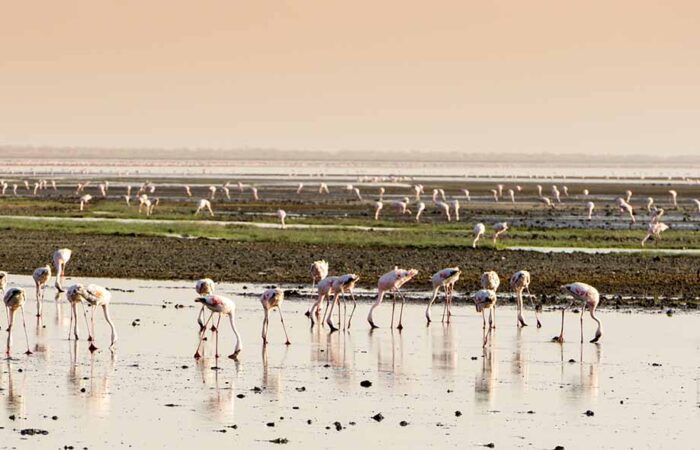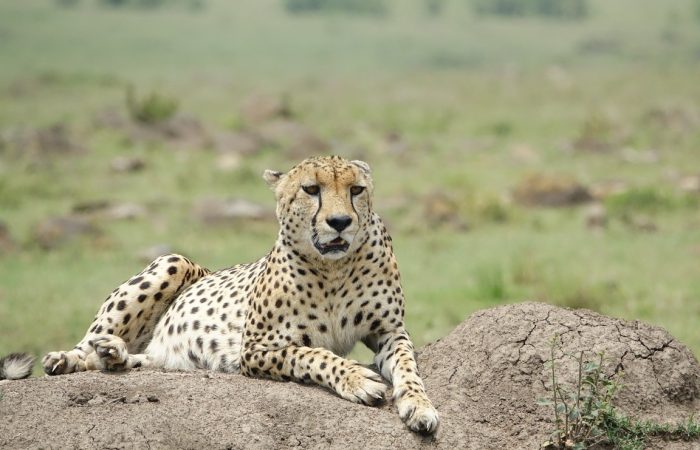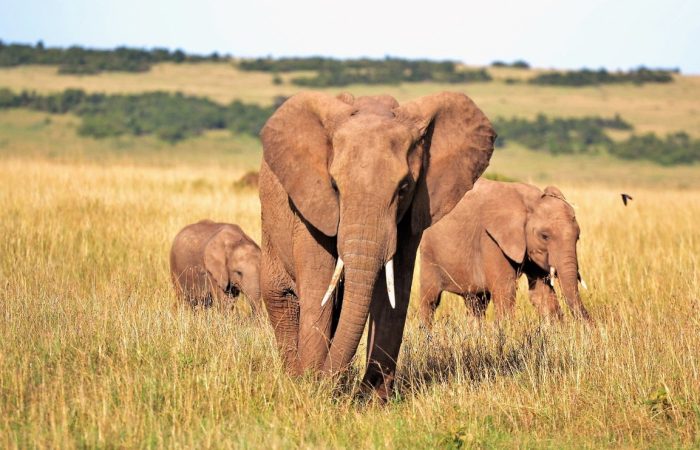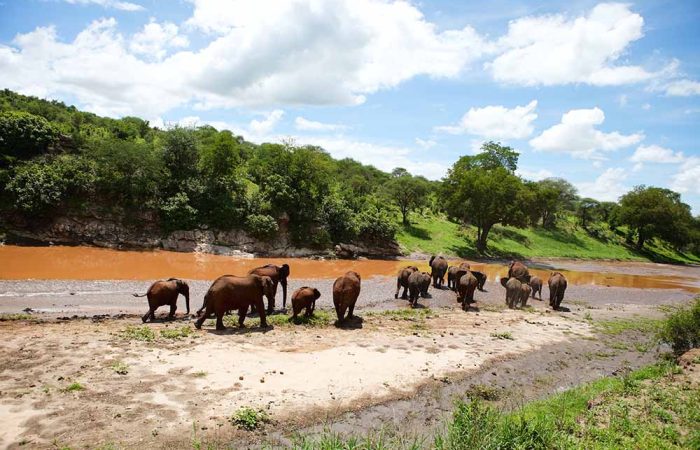January – March
These early months of the year are typically the hottest time of year in Tanzania (peaking in February). This season is generally dry, and is one of the best times for safari. Parks may feel a bit crowded, especially around the New Year.
Animals may be seen crowding around rivers and lakes for water, as other sources dry up.
Tarangire National Park is especially popular during this time. Because of the dry period, zebras and gazelles come to the Tarangire River for water. The predators, such as lions and leopards, consequently follow them. Therefore Tarangire National Park unquestionably becomes a major destination to spot all kinds of wildlife.
March – May
Mid-March through May is the “long rainy season”, marked by nights and mornings of rain. Typically, the sun makes an appearance in the afternoon and evenings are serene and peaceful.
The rains make everything lush, green and the animals are lively and active in the parks, with adequate sources of water everywhere.
However, some rough roads in the parks may be impassible, due to flooding or deep mud. Main roads in the parks are typically fine, and several parks, and Ngorongoro Conservation Area, have many sections of road which are paved and will not have any issues with driving.
This season sees significantly fewer tourists, and nearly all of the accommodations offer discounts for the low season. Guests who don’t mind rainy mornings have shared that their safari during the rainy season felt like an intimate, secluded adventure because they felt like they had the whole park to themselves to watch the incredibly active animals in the damp, green forests.
June – September
This period is considered the “cold” season in Tanzania. While for locals, the weather is cold (and you will see people wearing winter coats and hats), those visiting from other climates find the weather pleasant and fresh. Bring a jacket for chilly mornings, but afternoons are nice and generally sunny, and the weather is dry during this time.
This is another popular travel season in Tanzania, with many visitors in the national parks. If you’re not a fan of hot weather, this is the ideal time to visit during Tanzania’s dry season. This is also a common time for viewing the Great Migration in Serengeti National Park.
October – December
The short rains generally fall sometime between October and December, and the weather gets warmer as the end of the year approaches.
October is also the time when the jacaranda trees across East Africa bloom – a truly beautiful spectacle of trees crowned with purple flowers. In December the Flame Trees blossom, turning a vibrant red just before Christmas.
Christmas is a popular time for tourists to visit Tanzania and often the short rains have stopped by mid-December as well. Many visitors plan something special to mark the holiday season, such as summiting Mount Kilimanjaro to commemorate the day. Hotels and lodges may serve a special holiday meal for guests.
The weather in December is usually considered ideal, however, parks and accommodations may feel more congested than other times of the year.
Thousands of baby wildebeests born each day! Witness the miracle of new life – and the wonder of the ability of a baby wildebeest to run shortly after birth during this time.
March and April mark when the herds begin to congregate in the Seronera area of Serengeti, offering some spectacular photo opportunities of massive numbers of animals, peacefully grazing in a beautiful setting.
In May, the herds begin to move northward, forming impressive columns of animals marching in sync. They may congregate at the Western Corridor as they find a safe place to cross the Grumeti River. In this way, visitors have a chance to see the high density of animals that move together for migration. A truly incredible aspect of nature to witness with your own eyes!
July through to early September visitors are likely to witness the amazing migration of animals and the adrenaline-pumping Mara River crossing. The animals rush through the dangerous waters, moving in massive numbers in hopes of reaching the other side. This is the stuff of National Geographic, who do regularly film this phenomenon. Despite that, the energy and power of nature one can intimately feel only when witnessing live, not watching through a television screen.
You will leave with a renewed appreciation for Africa’s wildlife and raw aspects of nature that humanity has not interfered with. How incredible that this annual cycle has been occurring for probably a millennia. Moreover we are still able to appreciate and witness it, even today!
There are two river crossings that occur during this yearly cycle of migration: the Mara River and the Grumeti River. The names are used to indicate the direction the animals are heading:
The Grumeti River crossing often occurs during May and June, as the herds enter Kenya.
The Mara River crossing is the movement of herds from Kenya back into Tanzania, and often happens during July and August.
As you can see, the Great Migration is an ongoing spectacle in Serengeti National Park. There is something to see and experience at nearly every time of the year. If the Great Migration of Serengeti is on your bucket-list to witness, this is certainly a chance to make your dream come true!
Follow us on Instagram for more content like this.

